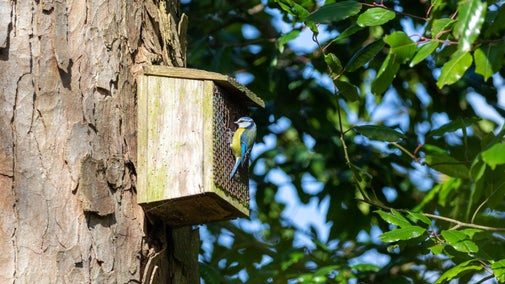
Start your journey of discovery
Delve into history, get tips from our experts, learn a new skill and go behind the scenes of your favourite places.

Every spring our team of building surveyors carry out a series of routine checks to make sure the historic buildings in our care are in top condition. Here they share a selection of their top tips on how you can keep your own ‘stately home’ maintained to a similar standard this year.
The last thing you need is your gutters overflowing, as they help to protect the roof, walls and foundations of your home. Clearing your gutters in the spring can help prevent costly repairs in the future.
Check chimney pots, flashings and flaunching (the material that tops the brickwork and that the pots sit on). If any aerials are fitted, examine their condition, as the last thing you want is a leaky roof.
This is best done during heavy rain to see water emerging from any leaky joints, so put your weatherproof coat on and grab an umbrella. In dry weather look for stained brickwork/stonework or vegetation growing from the wall.

If you start to notice damp patches or algae on your hardstanding areas or boggy bits in your lawn close to your home, it might just be worth looking up at the guttering. You may find they are the result of leaking gutter joints. Again, the best time to look is when it's rainy.
Splits and cracks behind pipes are very difficult to access once they are fixed to the wall, so rather than pulling your guttering off the house you can use a small mirror to check the condition in behind.
Plants always seem to thrive where they're not meant to – rainwater hoppers being a firm favourite. They may look pretty but they don't do your gutters any favours.

Rake out and repoint as necessary. It’s also good practice to clean the surfaces to remove algae – it not only makes it look better but algae can be slippery stuff.
Wild winter weather can easily block drains and open gullies with leaves, twigs and dirt. Make sure they are clear of debris and have them cleaned out if necessary.
Come spring, birds are looking for the perfect place to build nests, with chimneys seeming to be a top candidate. This can be a real safety issue as they block the free flow of gases such as carbon monoxide.
If it’s a cast gutter, paint the inside as well as the outside, as this protects the metal from rusting which in turn prevents those troublesome leaks. Plastic guttering joints can come loose in the winter wind so check where they may have moved away or started sloping the wrong way.

Realign or replace defective fence panels and undertake point work to copings. Both wooden and metal fencing need maintenance – paint or wood preservation can vastly extend the life of your fences or railings.
For some of our places we've found sneaky ways to camouflage manhole covers to be in keeping with the historic surroundings. The water hydrant covers at the front of Hardwick Hall have specially masoned paving slabs to identify them rather than standard metal covers. NB. manhole covers can be heavy and difficult to remove and replace; they also need to be properly repositioned so as not to become a trip hazard.
See if external joinery needs repainting or treating. Look out for peeling paint and bubbles that water could potentially get behind. Dry summer is the best time to do this work, so make a note and plan ahead.
Don’t undertake routine maintenance work at high level unless you are accompanied and have suitable equipment. If in doubt always seek help from a professional.

Delve into history, get tips from our experts, learn a new skill and go behind the scenes of your favourite places.
Challenge yourself to build a World Heritage Site or historic place with whatever you have at home and discover the history and legends of your favourite landmark.

Discover top tips on getting the most from your allotment or patch, and find out why growing your own fruit and vegetables is good for you in more ways than one.

Looking for new ways to help your local wildlife? Here are some of our top tips on how to make your garden a haven for animals, birds and insects.
